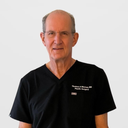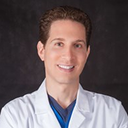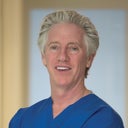One occuloplastic surgeon says fat transfer. One Miami plastic surgeon says only fat removal. As a physician myself, I like to decide base on facts... Also, why not simply doing an infraorbital nerve block and save OR cost? Thank you !
Answers (10)
From board-certified doctors and trusted medical professionals
Dr. Thomas A. Mustoe, MD, FACS

Dr. Thomas A. Mustoe, MD, FACS
Board Certified Plastic Surgeon
Answer
Dr. Kenneth D. Steinsapir, MD

Dr. Kenneth D. Steinsapir, MD
Oculoplastic Surgeon, Board Certified in Ophthalmology
Answer
Dr. J. Kevin Duplechain, MD, FACS

Dr. J. Kevin Duplechain, MD, FACS
Board Certified Facial Plastic Surgeon
Answer
Dr. James R. Gordon, MD, FACS, FAAO

Dr. James R. Gordon, MD, FACS, FAAO
Oculoplastic Surgeon, Board Certified in Ophthalmology
Answer
Dr. John J. Martin, Jr., MD

Dr. John J. Martin, Jr., MD
Oculoplastic Surgeon, Board Certified in Ophthalmology
Answer
Dr. Robert S. Houser, DO
Dr. Robert S. Houser, DO
Board Certified Plastic Surgeon
Answer
Dr. William Portuese, MD
Dr. William Portuese, MD
Board Certified Facial Plastic Surgeon
Answer
Dr. Gregory D. Lewen, MD, FACS
Dr. Gregory D. Lewen, MD, FACS
Oculoplastic Surgeon, Board Certified in Ophthalmology
Answer
Dr. Steven Wallach, MD
Dr. Steven Wallach, MD
Board Certified Plastic Surgeon
Answer
Dr. Brooke R. Seckel, MD, FACS (retired)
Dr. Brooke R. Seckel, MD, FACS (retired)
Board Certified Plastic Surgeon
Answer
More Eyelid Surgery Questions
See all Eyelid Surgery Q&AWE SEND PRETTY
EMAILS
What’s trending? Who’s turning heads? Which TikTok myths need busting? We’ve got you. No fluff, no gatekeeping—just real talk. Get our free, unfiltered newsletter.
